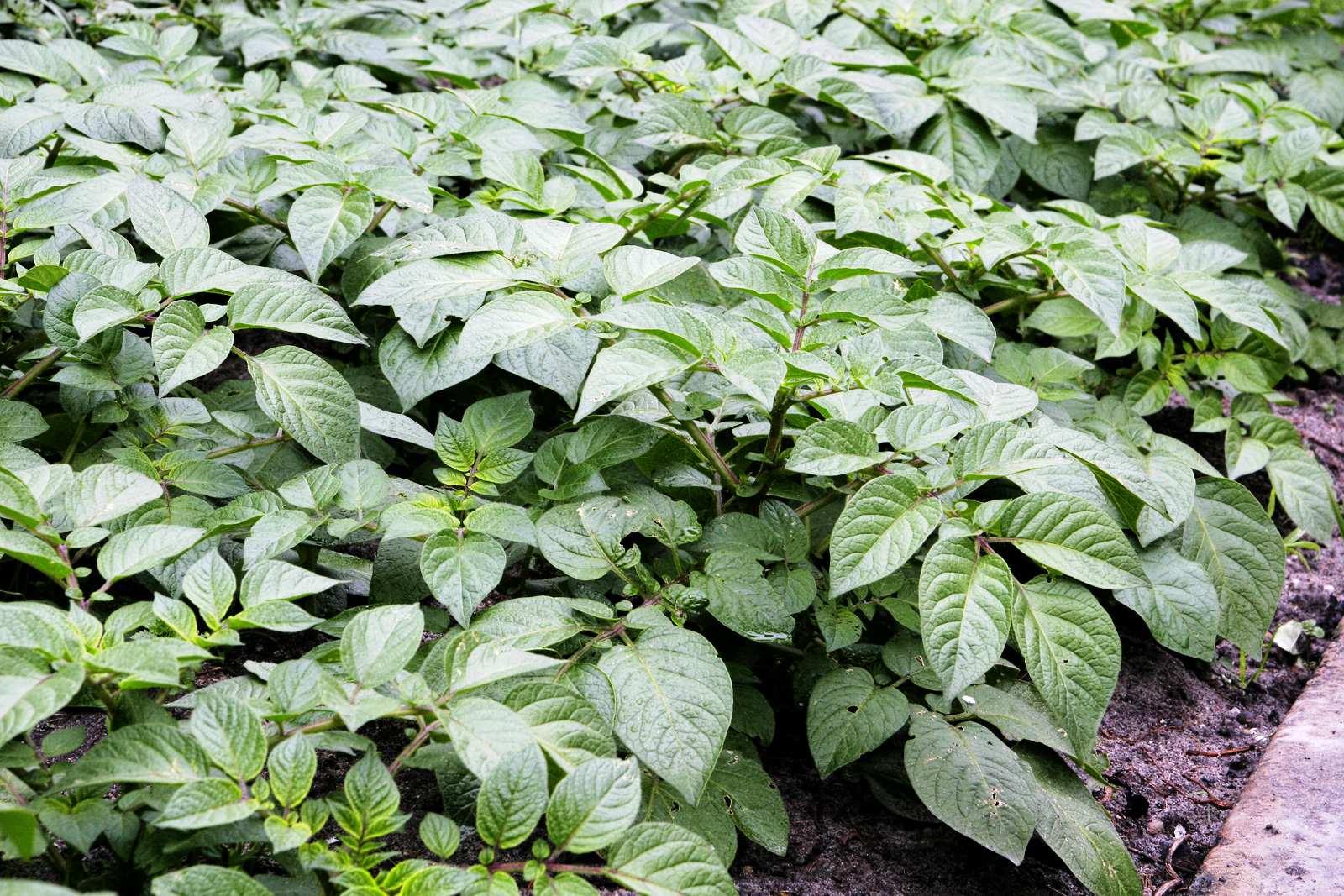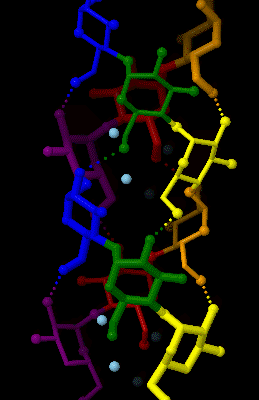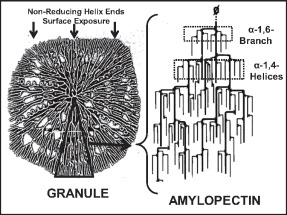|
Amflora
Amflora (also known as EH92-527-1) is a genetically modified potato cultivar developed by BASF Plant Science. "Amflora" potato plants produce pure amylopectin starch that is processed to waxy potato starch. It was approved for industrial applications in the European Union on 2 March 2010 by the European Commission. In January 2012, the potato was withdrawn from the market in the EU. History Originally registered on 5 August 1996, Amflora was developed by geneticist Lennart Erjefält and agronomist Jüri Känno of Svalöf Weibull AB. After the European Commission's approval of the potato, BASF announced it was going to produce Amflora seed starting in April 2010 in Germany's Western Pomerania (20 ha) and Sweden (80 ha). It also announced it was planting 150 ha in the Czech Republic "for commercial aims with an unnamed partner." Due to lack of acceptance of GM crops in Europe, BASF Plant Science decided in January 2012 to stop its commercialization activities in Europe an ... [...More Info...] [...Related Items...] OR: [Wikipedia] [Google] [Baidu] |
BASF Plant Science
BASF Plant Science is a subsidiary of BASF in which all plant biotechnology activities are consolidated. The company was founded in 1998 and employs approximately 700 people at 6 different locations worldwide. The headquarters of BASF Plant Science is located in Research Triangle Park (North Carolina, USA) and has research sites in the US, Canada, and Europe. The company is mainly developing genetically modified seeds at these locations. Company profile The company genetically modifies crops like maize, soy, cotton, canola, sugarcane, sugar beet, and potatoes "for more efficient agriculture". Together with subsidiaries and partners, as well as in cooperation with universities and research institutions, BASF Plant Science is also developing new procedures and practices in genetic technology. Genetically modified crops by BASF are sold and distributed through biotechnology companies like Monsanto, KWS Saat, Embrapa,Press Release �BASF and Embrapa’s Cultivance soybeans recei ... [...More Info...] [...Related Items...] OR: [Wikipedia] [Google] [Baidu] |
Potato
The potato is a starchy food, a tuber of the plant ''Solanum tuberosum'' and is a root vegetable native to the Americas. The plant is a perennial in the nightshade family Solanaceae. Wild potato species can be found from the southern United States to southern Chile. The potato was originally believed to have been domesticated by Native Americans independently in multiple locations,University of Wisconsin-Madison, ''Finding rewrites the evolutionary history of the origin of potatoes'' (2005/ref> but later genetic studies traced a single origin, in the area of present-day southern Peru and extreme northwestern Bolivia. Potatoes were domesticated there approximately 7,000–10,000 years ago, from a species in the '' Solanum brevicaule'' complex. Lay summary: In the Andes region of South America, where the species is indigenous, some close relatives of the potato are cultivated. Potatoes were introduced to Europe from the Americas by the Spanish in the second half of th ... [...More Info...] [...Related Items...] OR: [Wikipedia] [Google] [Baidu] |
Waxy Potato Starch
Waxy potato starch is a variety of commercially available starch composed almost entirely of amylopectin molecules, extracted from new potato varieties. Standard starch extracted from traditional potato varieties contains both amylose and amylopectin. Waxy potato starch, when gelatinized, has a clearer film, a stickier paste and retrogradates (thickening of starch film or paste during storage) less compared to regular potato starch. Waxy potato starch derivatives are used in textile sizing and food applications. Two types of potato plant varieties are developed using different methods: one using traditional breeding techniques and another using genetic manipulation (GMO). Amylopectin potato (traditional breeding) Through traditional breeding techniques an amylose-free mutant was obtained without genetic manipulation. Since 2005 the first natural potato variety Eliane is being cultivated and marketed by the starch company AVEBE. Amylopectin potato (genetically modified) Gene ... [...More Info...] [...Related Items...] OR: [Wikipedia] [Google] [Baidu] |
Potato
The potato is a starchy food, a tuber of the plant ''Solanum tuberosum'' and is a root vegetable native to the Americas. The plant is a perennial in the nightshade family Solanaceae. Wild potato species can be found from the southern United States to southern Chile. The potato was originally believed to have been domesticated by Native Americans independently in multiple locations,University of Wisconsin-Madison, ''Finding rewrites the evolutionary history of the origin of potatoes'' (2005/ref> but later genetic studies traced a single origin, in the area of present-day southern Peru and extreme northwestern Bolivia. Potatoes were domesticated there approximately 7,000–10,000 years ago, from a species in the '' Solanum brevicaule'' complex. Lay summary: In the Andes region of South America, where the species is indigenous, some close relatives of the potato are cultivated. Potatoes were introduced to Europe from the Americas by the Spanish in the second half of th ... [...More Info...] [...Related Items...] OR: [Wikipedia] [Google] [Baidu] |
Genetically Modified Potato
A genetically modified potato is a potato that has had its genes modified, using genetic engineering. Goals of modification include introducing pest resistance, tweaking the amounts of certain chemicals produced by the plant, and to prevent browning or bruising of the tubers. Varieties modified to produce large amounts of starches may be approved for industrial use only, not for food. Currently marketed varieties Used for food Innate The genetically modified Innate potato was approved by the United States Department of Agriculture in 2014 and the US FDA in 2015. The cultivar was developed by J. R. Simplot Company. It is designed to resist blackspot bruising, browning and to contain less of the amino acid asparagine that turns into acrylamide during the frying of potatoes. Acrylamide is a probable human carcinogen, so reduced levels of it in fried potato foods is desirable. Though, browning does not affect the quality of the potato, it is simply that consumers tend t ... [...More Info...] [...Related Items...] OR: [Wikipedia] [Google] [Baidu] |
Amylose
Amylose is a polysaccharide made of α-D-glucose units, bonded to each other through α(1→4) glycosidic bonds. It is one of the two components of starch, making up approximately 20–30%. Because of its tightly packed helical structure, amylose is more resistant to digestion than other starch molecules and is therefore an important form of resistant starch. Structure Amylose is made up of α(1→4) bound glucose molecules. The carbon atoms on glucose are numbered, starting at the aldehyde (C=O) carbon, so, in amylose, the 1-carbon on one glucose molecule is linked to the 4-carbon on the next glucose molecule (α(1→4) bonds). The structural formula of amylose is pictured at right. The number of repeated glucose subunits (n) is usually in the range of 300 to 3000, but can be many thousands. There are three main forms of amylose chains can take. It can exist in a disordered amorphous conformation or two different helical forms. It can bind with itself in a double helix (A or ... [...More Info...] [...Related Items...] OR: [Wikipedia] [Google] [Baidu] |
Genetic Engineering
Genetic engineering, also called genetic modification or genetic manipulation, is the modification and manipulation of an organism's genes using technology. It is a set of technologies used to change the genetic makeup of cells, including the transfer of genes within and across species boundaries to produce improved or novel organisms. New DNA is obtained by either isolating and copying the genetic material of interest using recombinant DNA methods or by artificially synthesising the DNA. A construct is usually created and used to insert this DNA into the host organism. The first recombinant DNA molecule was made by Paul Berg in 1972 by combining DNA from the monkey virus SV40 with the lambda virus. As well as inserting genes, the process can be used to remove, or " knock out", genes. The new DNA can be inserted randomly, or targeted to a specific part of the genome. An organism that is generated through genetic engineering is considered to be genetically modified ( ... [...More Info...] [...Related Items...] OR: [Wikipedia] [Google] [Baidu] |
Amylopectin
Amylopectin is a water-insoluble polysaccharide and highly branched polymer of α- glucose units found in plants. It is one of the two components of starch, the other being amylose. Plants store starch within specialized organelles called amyloplasts. To generate energy, the plant hydrolyzes the starch, releasing the glucose subunits. Humans and other animals that eat plant foods also use amylase, an enzyme that assists in breaking down amylopectin, to initiate the hydrolyzation of starch. Starch is made of about 70–80% amylopectin by weight, though it varies depending on the source. For example, it ranges from lower percent content in long-grain rice, amylomaize, and russet potatoes to 100% in glutinous rice, waxy potato starch, and waxy corn. Amylopectin is highly branched, being formed of 2,000 to 200,000 glucose units. Its inner chains are formed of 20–24 glucose subunits. Dissolved amylopectin starch has a lower tendency of retrogradation (a partial recrystalli ... [...More Info...] [...Related Items...] OR: [Wikipedia] [Google] [Baidu] |
Modified Starch
Modified starch, also called starch derivatives, are prepared by physically, enzymatically, or chemically treating native starch to change its properties. Modified starches are used in practically all starch applications, such as in food products as a thickening agent, stabilizer or emulsifier; in pharmaceuticals as a disintegrant; or as binder in coated paper. They are also used in many other applications. Starches are modified to enhance their performance in different applications. Starches may be modified to increase their stability against excessive heat, acid, shear, time, cooling, or freezing; to change their texture; to decrease or increase their viscosity; to lengthen or shorten gelatinization time; or to increase their visco-stability. Modification methods Acid-treated starch (INS 1401), also called thin boiling starch, is prepared by treating starch or starch granules with inorganic acids, e.g. hydrochloric acid breaking down the starch molecule and thus redu ... [...More Info...] [...Related Items...] OR: [Wikipedia] [Google] [Baidu] |
Starch Retrogradation
Retrogradation is a reaction that takes place when the amylose and amylopectin chains in cooked, gelatinized starch realign themselves as the cooked starch cools. When native starch is heated and dissolved in water, the crystalline structure of amylose and amylopectin molecules is lost and they hydrate to form a viscous solution. If the viscous solution is cooled or left at lower temperature for a long enough period, the linear molecules, amylose, and linear parts of amylopectin molecules retrograde and rearrange themselves again to a more crystalline structure. The linear chains place themselves parallel and form hydrogen bridges. In viscous solutions the viscosity increases to form a gel. At temperatures between –8 and +8 °C the aging process is enhanced drastically. Amylose crystallization occurs much faster than crystallization of the amylopectin. The crystal melting temperature of amylose is much higher (about 150 ℃) than amylopectin (about 50–60 ℃). The tempera ... [...More Info...] [...Related Items...] OR: [Wikipedia] [Google] [Baidu] |
Polymer
A polymer (; Greek ''poly-'', "many" + '' -mer'', "part") is a substance or material consisting of very large molecules called macromolecules, composed of many repeating subunits. Due to their broad spectrum of properties, both synthetic and natural polymers play essential and ubiquitous roles in everyday life. Polymers range from familiar synthetic plastics such as polystyrene to natural biopolymers such as DNA and proteins that are fundamental to biological structure and function. Polymers, both natural and synthetic, are created via polymerization of many small molecules, known as monomers. Their consequently large molecular mass, relative to small molecule compounds, produces unique physical properties including toughness, high elasticity, viscoelasticity, and a tendency to form amorphous and semicrystalline structures rather than crystals. The term "polymer" derives from the Greek word πολύς (''polus'', meaning "many, much") and μέρος (''meros'', mean ... [...More Info...] [...Related Items...] OR: [Wikipedia] [Google] [Baidu] |
Sweden
Sweden, ; fi, Ruotsi; fit, Ruotti; se, Ruoŧŧa; smj, Svierik; sje, Sverji; sju, Sverje; sma, Sveerje or ; yi, שוועדן, Shvedn; rmu, Svedikko; rmf, Sveittiko. formally the Kingdom of Sweden, is a Nordic countries, Nordic country located on the Scandinavian Peninsula in Northern Europe. It borders Norway to the west and north, and Finland to the east. At , Sweden is the largest Nordic country and the List of European countries by area, fifth-largest country in Europe. The Capital city, capital and largest city is Stockholm. Sweden has a population of 10.5 million, and a low population density of ; around 87% of Swedes reside in urban areas in the central and southern half of the country. Sweden’s urban areas together cover 1.5% of its land area. Because the country is so long, ranging from 55th parallel north, 55°N to 69th parallel north, 69°N, the climate of Sweden is diverse. Sweden has been inhabited since Prehistoric Sweden, prehistoric times, . T ... [...More Info...] [...Related Items...] OR: [Wikipedia] [Google] [Baidu] |






